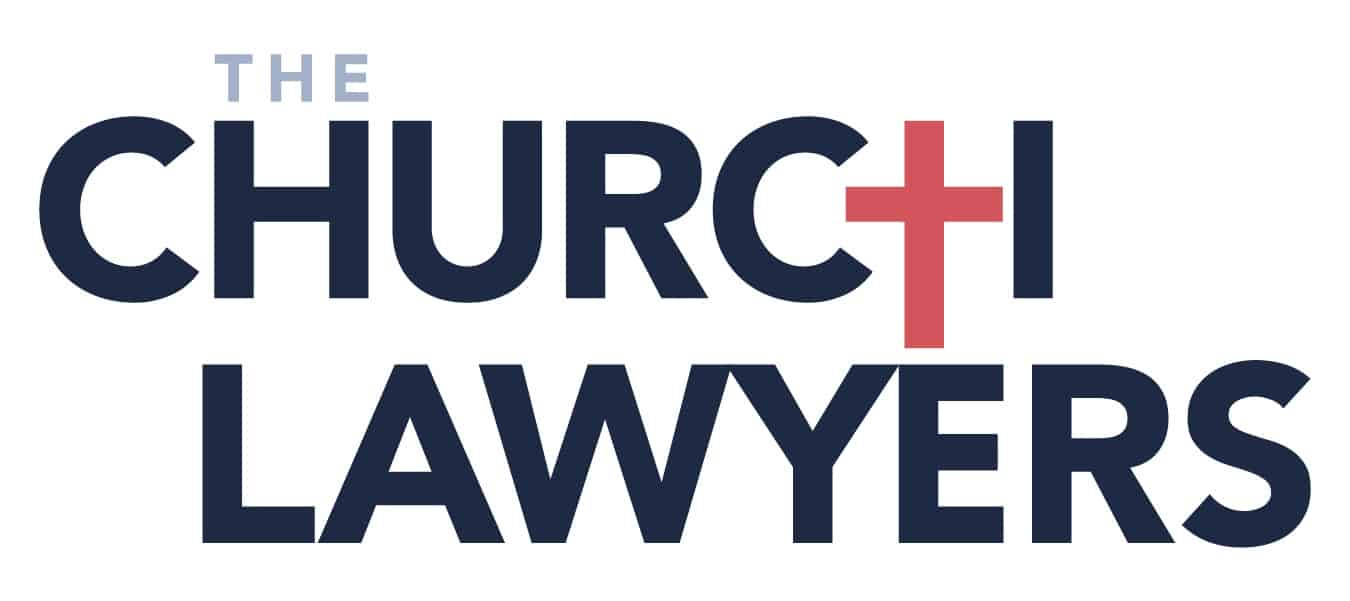Clarifying the Roles of Church Boards & Staff (Part 2)
If you enjoy this episode, subscribe on your device for more:
iTunes RSS Google Play Stitcher Spotify
Like we talked about in Part 1 of this conversation last week, in the last 11 years of working with churches we’ve found that church governance is a key difference between healthy, thriving, growing churches and churches that are stuck or in decline. And as an example, we mentioned last week that stuck churches have 40% larger boards and twice as many committees as healthy churches.
And there are also some common factors of stuckness in churches around complexity. Complexity in decision-making leads to a lack of strong leadership. The key issue around leadership is this: if the governance of your church is not healthy, then your leaders are not empowered to lead strong.
I want to make this episode as practical as possible today. So Sean and I are going to dive into specific best practices we see that commonly distinguish the governance model at healthy churches. We talk through:
- Best practices for selecting board members
- Why your selection process matters for the long-term health and growth of your church
- Why you don’t need to give everyone a voice or a vote
- How to build a healthy relationship between the senior pastor and the board
- Best practices for structuring your church board
Leader Conversation Guide
Want to take this conversation back to a staff or senior leadership team meeting?
Our Show Notes subscribers get a PDF download that recaps the episode content and includes a discussion guide you can print out and use at an upcoming meeting.
Opt-in here and get the report, as well as access to the full archive of Leader Conversation Guides.
Say Hi on Social Media
We use #unstuckchurch on Twitter, and we start a real-time conversation each Wednesday morning when the episode drops.
You can follow me @tonymorganlive and The Unstuck Group @unstuckgroup. If Facebook is where you spend your time, I’m there, too.
Links & Resources from the Episode
- 5 Key Roles of an Effective Church Board | Part 1 | Episode 169
- Take a look at our Unstuck Leadership Coaching options and our Unstuck Consulting options to see how we can help you build a healthy relationship between your senior pastor and your board and structure your church staff for success.

Watch the Webinar Replay: 3 Keys to an Effective Church Board + Staff
This practical conversation helps us clarify the essential roles of the board and the staff team, and helps you position your church for healthy growth under aligned leadership.

Special thanks to ECFA (Evangelical Council for Financial Accountability) and The Church Lawyers for sponsoring this event.
Write a Review—It Helps!
Particularly on iTunes, your ratings and reviews really do help more pastors discover the podcast content I’m creating here. Would you take a minute to share your thoughts? Just open the the podcast on iTunes on your phone or computer, click Ratings & Reviews, and leave your opinion.
Transcript
Sean (00:02):
Well, hey everyone. Welcome to The Unstuck Church Podcast, where each week we’re exploring what it means to be an unstuck church. My name is Sean, and I’m, once again, filling in on hosting duties for Amy today. And I’m here with Tony Morgan. Tony, I’ve got one week of hosting under my belt, and I know I’m not Amy, but I’m back. So that must be a good sign.
Tony (00:20):
Well, now, you know how I feel every week. I feel like I’m part of the B team. So, thanks for joining the JV team with me, Sean.
Sean (00:30):
Absolutely. We got to get Amy back here to really up our podcast game. Right? Well, we’re going to get into this week’s conversation in just a second, but before we do, I want to remind our listeners about an upcoming webinar that we’re hosting on three keys to an effective church board and staff. In the webinar, we’re going to address some of the most common mistakes that church boards make both at larger churches, as well as ones that we see often in smaller churches. We’re going to help you understand some of the best practices that really distinguish the governance model in healthy churches, and more clearly define just the core responsibilities and the job and role of a board member. The goal of this webinar is just to help you improve the health and relationship between your lay leadership and the pastor and staff on your team. So we’d love it if you’d consider joining us on December 17th at 1:00 PM Eastern, and you can get more information at theunstuckgroup.com/webinar. So last week we started a two-part series on clarifying the roles of boards and staff teams, and Tony, for those who may have missed last week, can you catch us up to speed?
Tony (01:32):
Yeah, so we started by talking, and it’s just unbelievable, but I mean, it’s so true. I mean, we find that one of the reasons why there’s these differences between healthy, thriving, growing churches and churches that are stuck or in decline, it has to do with governance. And as an example, we mentioned last week that stuck churches have larger boards. They’re actually 40% larger, so quite a bit. They have twice as many additional committees as healthy churches. And then what we talked about is there’s these common factors of stuckness in churches around complexity. So think about complexity of decision-making specifically, and then the lack of strong leadership. And as it relates to governance, the key issue around leadership is if the governance is not healthy, then your pastors, your staff leaders, your lay leaders are not going to be empowered to lead strong. And we mentioned this, but the key thought we talked about was thriving churches are led by lay leadership teams that streamline decision-making and empower the pastor and the staff team to lead strong. And so, in last week’s conversation, we talked about how to begin navigating this conversation with your board. And then I walked through some of the components of the job description of a board member. And by the way, if you haven’t done this, you may want to consider downloading last week’s episode and then listen to it with your entire board together. I mean, do this together. It can be a team effort, and then debrief together also what you’ve heard and maybe do a little self-assessment. So ask questions like this. Are we healthy based on what we heard in the podcast episode or do we think we have some work to do as a team?
Sean (03:23):
That’s good. Yeah. Well, with that foundation, let’s talk about some specific governance changes that may be needed in order to support healthy ministry. So Tony, where would you like to begin?
Tony (03:35):
Yeah, so Sean, I want to make this episode as practical as possible today. So I’m just going to run through a list of some specific best practices that we see that commonly distinguish the governance model in healthy churches compared to the governance model that we’re seeing in churches that are stuck. So these first couple have to do with selecting board members and the first best practice is this: rather than voting on board members based on popular popularity, leaders should be appointed based on gifting, biblical qualifications and alignment with mission, vision, and doctrine at your church. And so the way we see this actually being lived out in a, what I think is a healthy way, is we see in churches that get this right, the lead pastor and the senior level staff recommend new board members. Those folks then go through a screening process to make sure they really do fit the characteristics that you’re looking for in a board member. And then once they go through that screening process, the board then confirms indeed, yes, this is the right person to be added to our team. Now I know in some churches and some denominations congregational votes are also required in this process. And if that is the case in your church, I would encourage you to think about this as a vote of affirmation rather than a situation where you have multiple candidates kind of running against each other to represent or maybe be a voice for a segment of your church. And obviously the reason why we discourage that type of approach for filling board roles is that anytime you have a vote with people running against each other to fill board roles in churches, you’re going to have winners and losers. And too many times what we’ve seen is this really does foster division in churches. And that’s just, it’s not any way for a church ministry to be operating. The second best practice, and it’s related to this, is that we encourage churches to really follow through with the rotation of leaders that probably already exists and is established in your bylaws or your other governing doctrine. What we’ve seen too many times is churches, you know, there’s a role that needs to be filled. No one obvious steps up. And so they just continue to have the same leader serving in these positions year after year after year. And you need to follow through with those rotations. And actually, if you don’t have that established in your guidelines already, you need to establish that. And the reason why is what we’ve seen is when churches are kind of forced to make sure that there’s a rotation of leaders, they get more intentional about raising up future leaders. And then the other thing is it really does create more opportunities to expand the diversity of your leadership as well. And making sure that your congregation and your leaders, in this specific instance, are a reflection of the community that you’re trying to reach. And so that may be adding multi-ethnicity diversity in that way to your team. But the more common challenge that I find is the leadership isn’t reflective of the multi-generational congregation or community around them. And so you want to make sure that you’re opening up opportunities for younger leaders to be a part of this team as well. The other thing that that does too is it just brings fresh perspective. I mean, it brings new ideas, new thinking, and for churches that are stuck, having that fresh perspective is critical, I think, to considering the next steps, the new direction, the new strategies that churches need to be considering. So even if your best leaders have to rotate off, you should encourage them to do that. That’s good for them as individuals to have some time away, but also that’s good for your church, for your leadership team to bring in that fresh perspective in those fresh voices.
Sean (08:09):
So Tony, you brought up what can be the touchy subject of congregational voting, and so what I’m picking up from you, and let me maybe word it this way, if you were starting a church today, this wouldn’t be the strategy that maybe you start your church with. Can you share them a little more about that?
Tony (08:28):
Yeah. Yeah, so, you know, giving everyone a voice in decisions, it’s a very American thing to do. I mean, needless to say, based on what we’ve experienced over the last weeks, we know that to be true. But it’s not a very biblical approach to the decision making in the context of the churches. I mean, you won’t find anywhere in scripture where there was a voice vote, a democracy trying to decide spiritual leadership decisions. And there in the Bible, we we’ve identified we need qualified leaders, biblically qualified leaders. And we need people who are spiritually mature making decisions. What you don’t see in scripture is people that aren’t qualified to lead, they’re not aligned with the mission, the direction of the ministry. And you don’t see people who are not believers making decisions about the spiritual direction of the congregation or the church either. But the challenge is in our churches, at least in America, too many times we see opening up key decisions to everybody who’s a member of the church or everybody in the congregation as a whole. And because of that, we have people making decisions about spiritual direction that really aren’t qualified to do that. Now, again, I mentioned, your denomination may require voting in certain instances, but I would encourage you to make those congregational votes as few as possible. Because every time you open up the voting process, it just creates more of an opportunity for division to be occurring in your congregation. And we want to avoid that as best as possible. So the fewer of the congregational votes, Sean, the better.
Sean (10:20):
So, this is a practical conversation. Let’s shift to talk about the structure of the boards and committees. Can you help us with some of the best practices here?
Tony (10:30):
Yeah. So here’s the first one in this category. There should only be one lay leadership board that handles all of the responsibilities of previous boards and committees. So, you know, last week I mentioned, we ran into one church that had a board and 39 additional committees. Rather than 40 different groups of people making decisions, there should only be one. And so, more practically, what that might mean is you might have currently a separate finance committee, a separate personnel committee, a separate building committee, or a group of trustees, as an example, handling building or facilities decisions. You should combine all of those responsibilities under one board. And sometimes, as an example, Sean, denominations require these different committees but many times denominations also provide some flexibility for all of those committee functions to be combined under one unified board. I’m, as an example, pretty familiar with what happens in United Methodist churches, because I served in the United Methodist church previously. And the United Methodist denomination does provide that flexibility to combine all of those responsibilities under one unified board, and very likely your denomination does as well. This is an actual example from an actual church. Sean, I don’t make these stories up, but I was working with a church one time and all they wanted to do. It was the youth pastor was meeting, unfortunately youth ministries too many times get stuck in the basement of churches. And so the youth pastor was just wanting to repaint the youth ministry room. And in order to get that decision made, the youth pastor had to bring it to, there was a youth ministry committee, there was a facilities committee, there was a finance committee that had to approve the expenditure of the money. I mean, and then ultimately the board was having to make this decision, and I’m thinking, my goodness, why in the world does this exist in churches today? Eventually the youth pastor just got fed up though, went down to Home Depot, picked up some paint and spent their own money and painted the room. But it’s just a good example, and it’s a bad example, but it’s a good example of some of the challenges that exist when you have too many committees in the churches, each one of them trying to control decision-making in a different way. Another best practice related to this kind of focus area here is there shouldn’t be any subcommittees on the board either. And many times what we see is churches have sub-committees that are created to handle different aspects of the board’s responsibility. And in essence, what they’re doing is they’re just creating new committees. And again, what we just explained is you want one board making all the decisions. And so, you know, if your staff needs to build an annual budget, as an example, don’t have a separate subcommittee of the board that’s focused on developing the budget. Let your staff develop the budget and bring their recommendation to the full board, and let the full board process that together. So, too many times the decisions that sub-committees would have handled in the past, they’re, like I said, it’s like you’re almost recreating separate committees and that’s just not healthy. You need the entire board to be considering this together. Otherwise division’s going to be created. And again, decision-making is going to be more challenging. So try to eliminate all those sub committees. One unified board is the key thought here.
Sean (14:31):
That’s really good. Tony, we talked about this a little bit last week, but how about some of the best practices in governance structure, just to encourage that healthy relationship between the board and the senior pastor and the staff? What do you recommend there?
Tony (14:46):
Yeah, Sean, good question. So, first of all, the only staff member who should have a vote on the board should be the senior pastor. It’s okay if from time to time you invite other staff leaders to join conversations with the board. I think that’s actually a good practice, especially when the board is discussing something in a specific ministry area where you want the staff person who’s involved in that area to be a part of that conversation. But you don’t want a situation where the staff are being supervised by the senior pastor, but because they also have a vote on the board, they’re kind of also the supervisor of the senior pastor. And you may think, well, that would never happen. I can rattle off a list of churches where that was actually how they were structured. And it gets really dysfunctional fast when you’re trying to lead a team and those team members are also making decisions about your salary, whether or not you have a job with the church, and personal issues involving the senior pastor, where again, we talked last week, you want the board to be an encouragement for the senior pastor. It just gets dysfunctional fast when you don’t have that clarity. So obviously you need to avoid here too, it’s not just the staff person, but family members of the staff person. You don’t want to be leading a staff person and their spouse is also on the board. So you need to avoid that. And I know these things sound obvious, but we wouldn’t be talking about these best practices today if we didn’t have so many real life examples of churches that are getting all of this wrong. Another best practice, there should only be one person who should be accountable to the board. And that one person should be the senior pastor. All the other staff leadership roles, including hiring and firing those roles, and as we talked about last week, even establishing salaries for those roles, that should be the senior pastor’s responsibility. The pastor should be able to select, lead, develop, clarify wins, manage performance, and if needed, terminate anyone who doesn’t align with team culture or if they’re underperforming. So let me give you an example here. I’ve seen situations where board members get assigned different staff people at the churches, and in the best case scenario, it’s an opportunity for board members to take personal responsibility for knowing staff and to be praying for staff, but where this gets a little wonky is I’ve seen those board members really begin to take an intimate role in what’s happening in that staff person’s ministry. And whereas the senior pastor should be accountable for what’s happening on their team and leading that team, sometimes I’ve seen board members really take on responsibility for staff that they should not have. And they’ve tried to take on some accountability roles and actually engage in personnel problems when really that’s not their role. That should be the senior pastor’s responsibility. And so one of the churches I was working with several years ago, unfortunately, some personnel, human resources problems began to fester in the staff team. And because different individual board members tried to get involved in those problems, there was a lot of he said/she said stuff happening. And rather than coming to resolution on these issues and letting the senior pastor handle them, the board tried to get involved. And again, it just created dysfunction. It created division, it just got to an unhealthy place. And really, it wasn’t the senior pastor’s fault, but the senior pastor was being blamed for it because the board was getting involved in responsibilities it just wasn’t a part of their job. So here again, clear distinction of responsibility, the board should lead one staff person. That staff person should be the senior pastor. And then the senior pastor should have the responsibility for leading the rest of the staff.
Sean (19:17):
Yeah, so Tony, you know, we have far more pastors than board members who listen to our podcast. And so with that in mind, will you give pastors just some coaching around this topic so that they can monitor their contribution to a healthy relationship with their board?
Tony (19:33):
Yeah. So here’s some questions maybe you can process, pastors, with somebody close to you, and hopefully your relationship with your board will be healthy enough that you can also process these questions directly with them. But let me just list some key things here. First question is this. Am I doing my part to ensure a healthy relationship with the board or overseers who have authority over me? Second one, am I promoting good communication flow with the board so that they have the information they need to make wise decisions and provide appropriate accountability and encouragement to me as the pastor?Here’s another question. When a conflict arises between the board and me, do I keep short accounts and talk through the conflict until we reach a healthy resolution? Here’s another one. Am I inviting and honest in helpful dialogue with the board about my leadership and the direction of our ministry? And then finally, am I modeling full devotion to Christ and living a life worth following and encouraging the board to do the same? And Sean, I mean, we just rattled through those key questions pretty quickly. I know those will be in the show notes as well. But these are key conversations that you need to be having. And like I said, hopefully trust develops to the level where you can be having these conversations directly with your board, but you need to be having these conversations with somebody that’s close to you to hopefully help you be thinking about how, over time, you can develop that kind of relationship with your board that you can have these open and honest conversations.
Sean (21:17):
Well, Tony, I think that these last two episodes, they’ve been really practical and helpful, and like you and I have shared, unfortunately, we do have many, many examples of churches who are stuck in this area when it comes to the structure and the function of their board and relationship with the senior pastor. So any final thoughts before we wrap up this a two-part conversation?
Tony (21:39):
Yeah, last week I mentioned that I know these topics can be rather delicate to navigate between boards and pastors. And believe me, I understand it. I can’t tell you how many times I’ve had side conversations with pastors about the challenges they’re facing with their boards. And, I mean, it makes me sad to even say that, but many times you could just hear it in their voice. I mean, they’re tired, they’re emotionally drained. And unfortunately there’ve been too many instances when pastors are admitting to me that they’re considering leaving the church because this relationship just isn’t healthy. And so, rather than running away from that situation, I hope you’ll press in. I mean, really try to engage these conversations. And hopefully these two episodes that we’ve had will encourage some healthy conversation with your board, but we also want to help you with this. For the last 10 years or more, we’ve been providing pastors with an ally, coaching them as they lead their churches toward a new vision for the future, with the ultimate goal of continually reaching new people and helping those new people take their next steps toward Christ. And many times that has included providing coaching to pastors and boards around their roles and responsibilities. And we can coach you through this, too. So if you’re interested, you can learn more by visiting theunstuckgroup.com/coaching.
Sean (23:02):
Well, Tony, thanks for letting me join you over the last couple of weeks to host this podcast series with you. I know we’re thankful for everybody who tunes in and listens to the podcast. So if this podcast has been helpful for you, we would love your help in getting the content out farther. You can subscribe on your favorite podcasting platform. You can give us a review there, and you can tell somebody else about our podcast. Next week, we’re going to be back with a brand new podcast series to help you to continue to refine your digital engagement strategy. So until then, have a great week.







